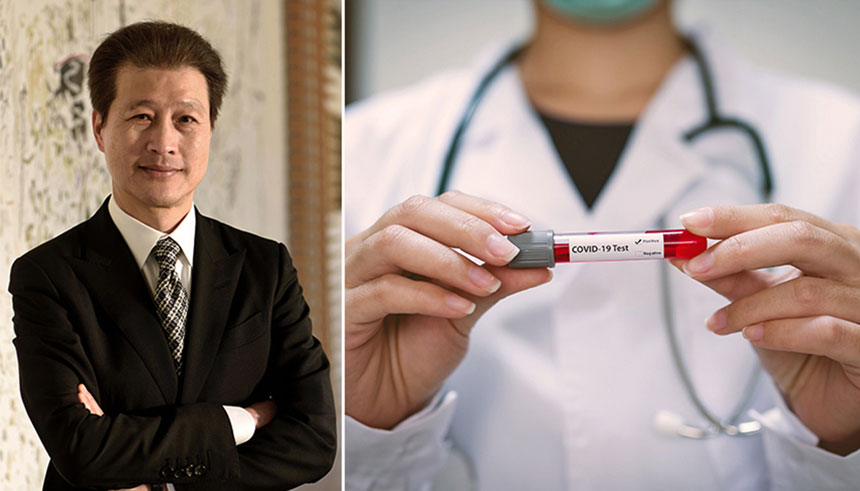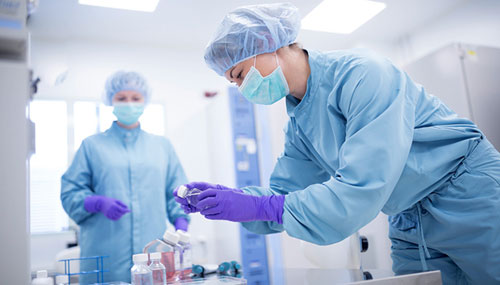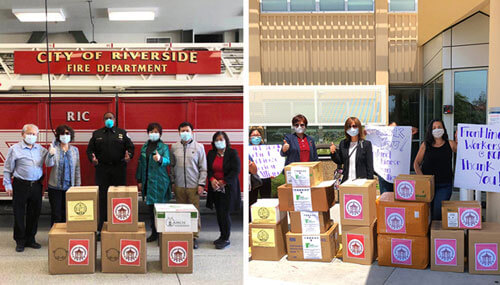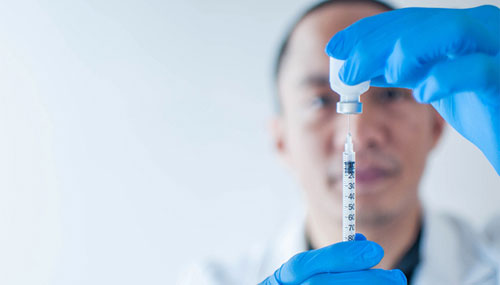US-Asia Business
Dominic’s Take: Amid US-China Stand-off, American and Chinese Citizens Show the Way with their COVID-19 Cooperation
By Dominic Ng

From donations of medical supplies to scientific collaboration, scientists, executives and ordinary people in both countries have shown a willingness to cooperate—and a recognition that the crisis needs to be tackled jointly by their governments.
The COVID-19 pandemic has put families, businesses and communities to the test. Now, more than ever, we have relied on one another to overcome the greatest public health and economic challenge of our lifetimes. But amid a crisis that requires our maximum effort, the world’s two largest economies are at loggerheads.
U.S.-China relations are at the lowest point in decades. At the governmental level, mutual blame-shifting and name-calling has created such a toxic environment that official cooperation has come to a standstill.
Yet Americans resoundingly want to work with China to respond to the coronavirus. Morning Consult/Politico polls last month showed a 28-percentage-point margin in favor of working with China to combat the pandemic, despite political frictions. And while governmental cooperation has seized up, private citizens in both countries are working together to address the crisis.
U.S. and Chinese scientists, often in collaboration with one another, have been central to efforts to combat COVID-19. On December 31, 2019, medical experts at the Wuhan Municipal Health Commission first reported the outbreak to the World Health Organization (WHO). On January 12, Chinese scientists published the genetic sequence of the novel coronavirus. These crucial first steps allowed scientists around the world to begin studying the virus. Universities and labs moved quickly to set up research partnerships—Harvard Medical School and the Guangzhou Institute for Respiratory Diseases; Columbia University and Sun Yat-sen University, among others. Biopharmaceutical companies are now racing to develop vaccine candidates, and some, like Dynavax in Berkeley and Sinovac in Beijing, have combined forces in the hunt for a safe and effective vaccine.
"Americans resoundingly want to work with China to respond to the coronavirus… And while governmental cooperation has seized up, private citizens in both countries are working together to address the crisis."

But politics have gotten in the way of good science. A new study conducted by U.S. and Chinese scientists and funded by the National Institutes of Health (NIH) identified the natural origin of the virus that causes COVID-19. But the NIH canceled that grant last month after President Trump, without evidence, asserted that the virus came from a Chinese lab.
Businesses with ties across the Pacific have also played a crucial role in addressing the crisis. In the early stages of the outbreak in China, business leaders like Li Lu, a Chinese American investor with deep ties to both countries, organized shipments of medical supplies to virus-stricken Wuhan. Later, as Wuhan recovered and the virus spread in the United States, he reversed the flow and began shipping medical supplies from China to the U.S.
Some of these efforts made headlines—like Jack Ma’s donation of 1 million masks and 500,000 test kits in March—but most didn’t. Countless individuals and nonprofit groups collected donations and arranged shipments of medical supplies to hospitals and first responders. One group, the Michigan Chinese American Coalition to Fight COVID-19, collected $240,000 from the community and used their connections in China to acquire 200,000 masks for 55 hospitals in Michigan. Acts like these saved lives and demonstrated how the U.S. and China are better off working together—rather than against one another—to end the crisis.

"Acts like these saved lives and demonstrated how the U.S. and China are better off working together—rather than against one another—to end the crisis."
We are now entering a new stage of the pandemic, requiring an even greater degree of cooperation. Even as China and the U.S. have slowed infection rates and are gradually opening up, cases are mushrooming in much of the developing world. Countries with weaker health care systems will suffer tremendously without outside aid. And until a vaccine is found and distributed widely, an outbreak anywhere increases the risk of follow-on waves everywhere.
The U.S. and China together account for a substantial share of the scientific and productive capacity of the planet. Each country should commit to supporting collaboration between firms that can develop, produce and distribute protective gear, therapeutics and, eventually, a vaccine. Both countries should work together to ensure that developing countries get the supplies they need.
The economic fallout is now coming into focus, as well. In the first months of 2020, China suffered its worst downturn in a half-century with a quarterly contraction of -6.8 percent. In the U.S., as of May 26, over 41 million Americans have lost their jobs. Forecasts predict that the U.S. economy will shrink 9.7 percent year-on-year in the second quarter. No matter how they view one another, Washington and Beijing need each other to shore up the global economic outlook and foster a recovery.
"Each country should commit to supporting collaboration between firms that can develop, produce and distribute protective gear, therapeutics and, eventually, a vaccine.""

To start, they should keep talking. The phone call between senior trade negotiators in early May lifted spirits in the market, though only after President Trump threatened to shred his own trade deal. Beyond keeping communication lines open, the two countries should work together to manage debt relief in the developing world. A debt repayment crisis in developing countries is looming and will spill into the global financial system: a multilateral response that does not build from U.S.-China cooperation will come up short. The U.S. and China, despite their differences, can at least agree on that.
Even with the vitriol that dominates headlines, the American and Chinese people have found ways to work together against the virus. We will need more of that spirit in our leaders to overcome the challenges ahead.
This editorial first appeared on the South China Morning Post.
Sign up for the Reach Further Newsletter
We’ll keep you in the know about the latest US-Asia business news and trends.
Suscríbase al boletín Reach Further
Lo mantendremos informado sobre las últimas noticias y tendencias comerciales entre Estados Unidos y China.

